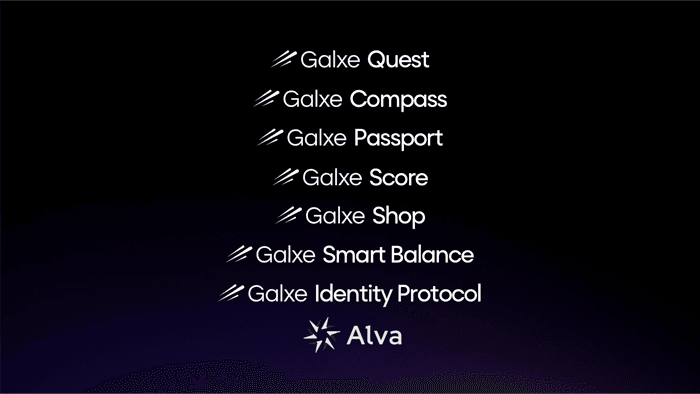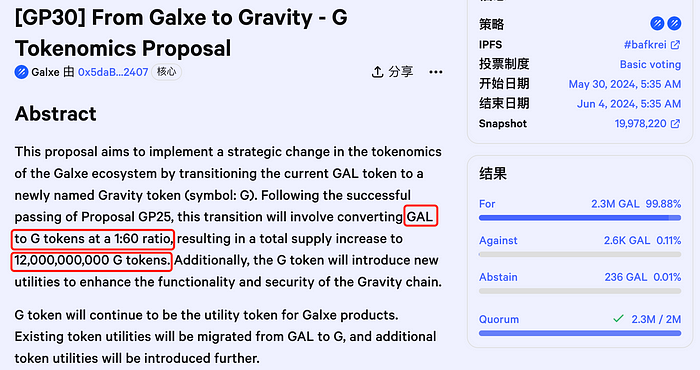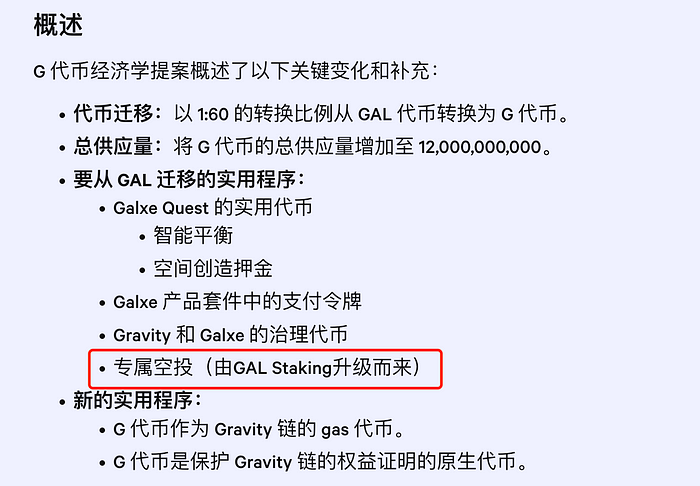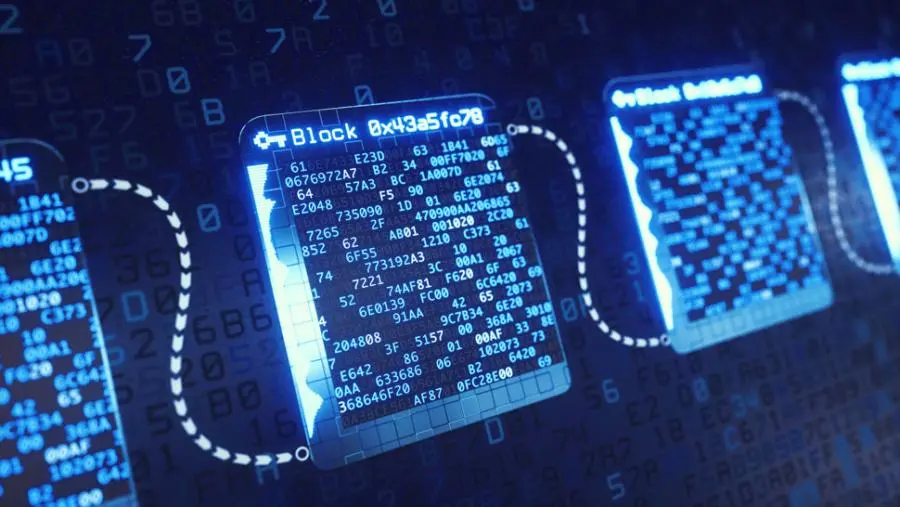Why is the probability of Galxe's chain abstraction platform, Gravity, being successful relatively high?
A few days ago, I saw the well-known Web3 task platform Galxe, which is preparing to create a Layer 1 blockchain called Gravity with a full-chain abstraction design. At that time, I felt that it was very necessary for Galxe to create a public chain, and the probability of success is quite high.
Why do I say that?
1. Current Pain Points in Web3
First, let’s talk about the background. Galxe has been operating as a task platform for two to three years, raising over ten million dollars in funding, and has completed listings on major exchanges. Before the token launch, many people interacted with tasks on the platform and later received millions in airdrops. Many current airdrop influencers emerged during that time, and many users also became aware of the Galxe platform then.
Now, regarding the current situation, many newcomers to the space ask me about the numerous tasks on Galxe and what the points on the platform are useful for. Why are many Dapps not recognizing them anymore?

Now the pain points emerge: users have completed many interactions but do not understand why they are doing so, and they cannot see results in the short term. Moreover, many listed projects do not recognize Galxe platform users. These Dapps are distributed across various chains, and new users need to prepare gas fees for many different chains. Each chain sets obstacles for users, increasing the entry barriers.
Currently, various L1, L2, L3, various infrastructures, and modular Dapps are flooding the market, all existing on different chains. For new users, this presents a very high barrier; for old users, it is a significant waste of funds. For example:
- On the ETH chain, you need to prepare ETH as gas,
- On SOL, you need to prepare $SOL as gas,
- On Polygon, you need to prepare $MATIC as gas,
- On AVAX, you need to prepare $AVAX as gas,
- On Sui, you need to prepare $SUI as gas,
- On BTC, you need to prepare $BTC as gas,
There are many more examples that I won't list one by one.
Too many fragmented modules lead to liquidity, applications, and users becoming more dispersed, creating overly complex situations for users. It also puts developers in a difficult position; if they choose a single chain, they effectively confine themselves to a niche market.
So, is there a platform that can integrate various Dapps like a portal website, allowing users to enter all Dapps with just one account and only needing to prepare one type of gas fee? Users do not need to worry about how the backend switches between public chains; they just need to click their mouse to navigate smoothly?
This is where chain abstraction comes into play.
2. What is Chain Abstraction?
Just like the Olympic spirit of "higher, faster, stronger," the capital market pursues its own spirit of "faster, cheaper, and more innovative." Whichever solution is better than previous ones will attract funding, and the game rules will form there, allowing people to make money.
Over the years, we have encountered too many solutions, each iteration cheaper and more innovative than the last, such as the infrastructure favored by capital:
- When L1 cannot scale, the industry creates Rollups;
- When Rollups fragment liquidity, the industry creates cross-chain bridges;
- When there are too many cross-chain bridges, the industry aggregates them all;
- When there are too many aggregators, the industry constructs Intents (the concept of chain abstraction mentioned in Paradigm's article "Collaborate with Paradigm" last year);
- When Intents are unclear, the industry creates an intent interpretation layer (the subdivisions of chain abstraction);
Each iteration above has enriched a batch of project parties, VCs, secondary markets, and yield farmers…
Why does every iteration in Web3 enrich yield farmers?
Because blockchain needs users. Without users, what is the point of these iterations? Without users, who is the abstraction for?
(1) What is Chain Abstraction?
Chain abstraction is the construction of universal and versatile smart contracts to solve interpretability issues such as cross-chain communication, asset transfer, and cross-chain smart contract invocation between different chains.
In simpler terms:
Chain abstraction means that users are unaware of the various underlying facilities and chains; they only need to interact with Dapps by clicking, without needing to know about the existence of chains. This is chain abstraction. It smooths out all obstacles for users, allowing them to focus on being users.
Our current blockchain has a very high barrier, very similar to the early internet, where players needed to input various commands to access it. Later, they had to remember various URLs, and the emergence of navigation websites solved this problem.
Web3 will also develop in this direction, making on-chain interactions increasingly simple, until users are unaware of the blockchain and do not even know they are using one.
Once this step is reached, several unicorns will emerge in the industry, monopolizing the vast majority of on-chain user traffic, breaking the current competitive landscape between chains and Dapps, and siphoning off the value dividends of the entire crypto space.
(2) Chain Abstraction Will Become the Ultimate Traffic Entrance, Capturing the Entire Web3
Imagine a scenario where, in the coming year, a user entrance that has been market-validated and is absolutely secure emerges. The on-chain interaction process is extremely simplified, meeting the vast majority of users' on-chain needs without requiring the purchase of various procedures—just "click, click, click" during interactions. Wouldn't the emergence of such a window that users are completely unaware of the blockchain's existence be revolutionary?
This window would become the entry point for the vast majority of users into the on-chain world, serving as the traffic entrance for the entire blockchain. Isn't that potential enormous?
If this is formed, it means that the TVL battle, competition between chains, and DEX market share disputes will lose their current significance, because users do not need to know what a DEX is or what a chain is; they only need to prepare a small platform fee to navigate freely. As for the cross-chain interactions behind the scenes, that has nothing to do with the users; they do not need to know about it—that's a backend issue for the platform, which only needs to continuously optimize the backend.
Galxe's Layer 1 blockchain Gravity, based on full-chain abstraction design, is doing just that, creating a Web3 portal where users only need to hold $G tokens as fees to access all projects on the navigation.
How is it doing this? Can it reach this height?
3. About Galxe's Gravity
How does Galxe achieve being the portal for Web3?
First, let’s take a look at what Galxe does.
(1) About Galxe
Galxe is the task platform with the most users in Web3 and also offers the best interaction experience. Its product line and fluidity rank among the top in six mainstream task platforms.
After about three years of development, it has eight very mature product lines.

- The number of active addresses on-chain has reached: 21,924,209;
- Monthly active users on-chain: 2,807,115;

- A total of 5,691 projects have launched 54,813 tasks on Galxe;

- Network traffic exceeds that of Uniswap, Opensea, or Etherscan, with over 1 million users visiting the Galxe website daily.

Galxe spans 34 different chains, far more than any cross-chain bridge or CEX integration. Before the mainnet of chain abstraction goes live, users can use Galxe's smart balance feature to deposit funds into a vault, using the balance to pay for gas fees for trading on multiple chains without needing to bridge.
Currently, only Galxe, Coinbase, and TON can achieve this level of traffic.
It can be said that Galxe has both users and technology, and launching Gravity for chain abstraction is just a final push.
(2) About Galxe's Chain Abstraction Platform Gravity
Galxe launched Gravity to integrate existing core products, addressing the current user scale and blockchain complexity, providing an integrated, simple, and seamless Web3 portal platform for its 20 million users and developers.
According to the official website, Gravity also simplifies multi-chain asset management, cross-chain transaction settlement, and user-friendly transaction processes, allowing users to avoid complex underlying technologies.
Simply put: users can use $G tokens as on-chain gas fees, completing all operations on the platform with one token, without needing to know the technology behind the blockchain.
Key Features of Gravity
- User Experience: Gravity utilizes a chain abstraction wallet, allowing one account to operate across all public chains;
- Security: It will adopt a PoS mechanism, staking the native token $G, ensuring security through re-staking protocols like Babylon and EigenLayer;
- EVM Compatibility: It will be compatible with all EVMs;
- Technical Aspects: Gravity will integrate the fastest execution layer Reth and AptosBFT consensus algorithm to improve throughput.
(3) Gravity Timeline
Gravity will be launched in two phases:
- Gravity Alpha Mainnet (Testnet): June 2024, supported by the Arbitrum Nitro tech stack, mainly for backend testing of cross-chain settlement.
- Gravity Mainnet (Mainnet): A re-staking driven PoS Layer 1 blockchain, using Reth as its EVM execution engine.
(4) About the Token
Galxe's previous token was $GAL, with a total supply of 200 million tokens and a circulation rate of 57.76%.
After Gravity launches, $GAL will be converted to $G tokens, with $G increasing to 12 billion tokens, and the exchange ratio of $GAL to $G will be 1:60;

With so many additional tokens, the token distribution will inevitably be redefined, creating opportunities for us.
(5) Our Opportunities on Galxe
Gravity will be launched in two phases, and the token has been diluted by 60 times, possibly to attract more users.
From the Galxe community, we can see that a portion of the $G tokens is allocated for airdrops, but the distribution mechanism is still unknown; it is expected that staking will be required to receive airdrops.
However, during the testnet phase, the project will likely distribute airdrops through point-based tasks, which is the best way to seize market share and build a foundation.

Conclusion
The launch of the chain abstraction L1 blockchain Gravity by Galxe is very necessary and relatively easy to implement.
First, Galxe can integrate existing partners, allowing them to gain more users and helping partners grow;
Second, it introduces a new token, integrating existing product lines, giving the current 20 million users a second opportunity for dividends;
Third, through chain abstraction, it smooths out many obstacles on the blockchain, leveraging the advantages of a Web3 portal to allow more newcomers to enter without barriers.
Chain abstraction has become a battleground for capital competition, and in the coming year, the market will see a mature, market-validated, and absolutely secure user entrance like Galxe. By drastically simplifying the on-chain interaction process, it will meet the vast majority of user needs. This window will become the entry point for the vast majority of users into the blockchain and will serve as the traffic entrance for the entire blockchain.












